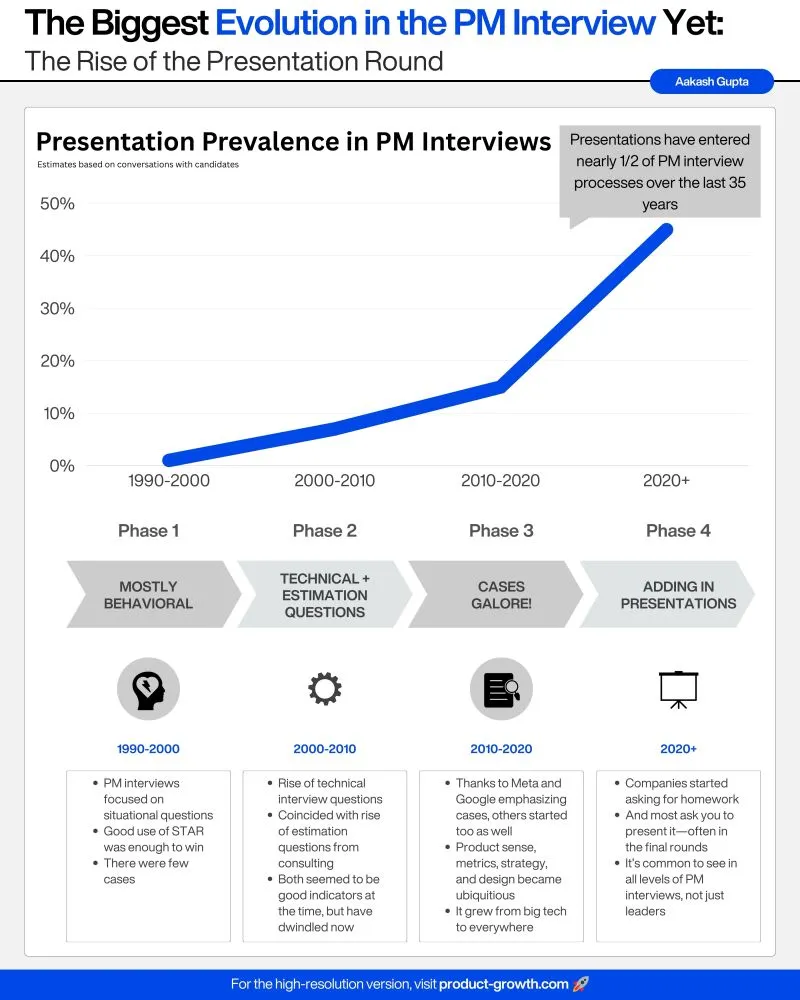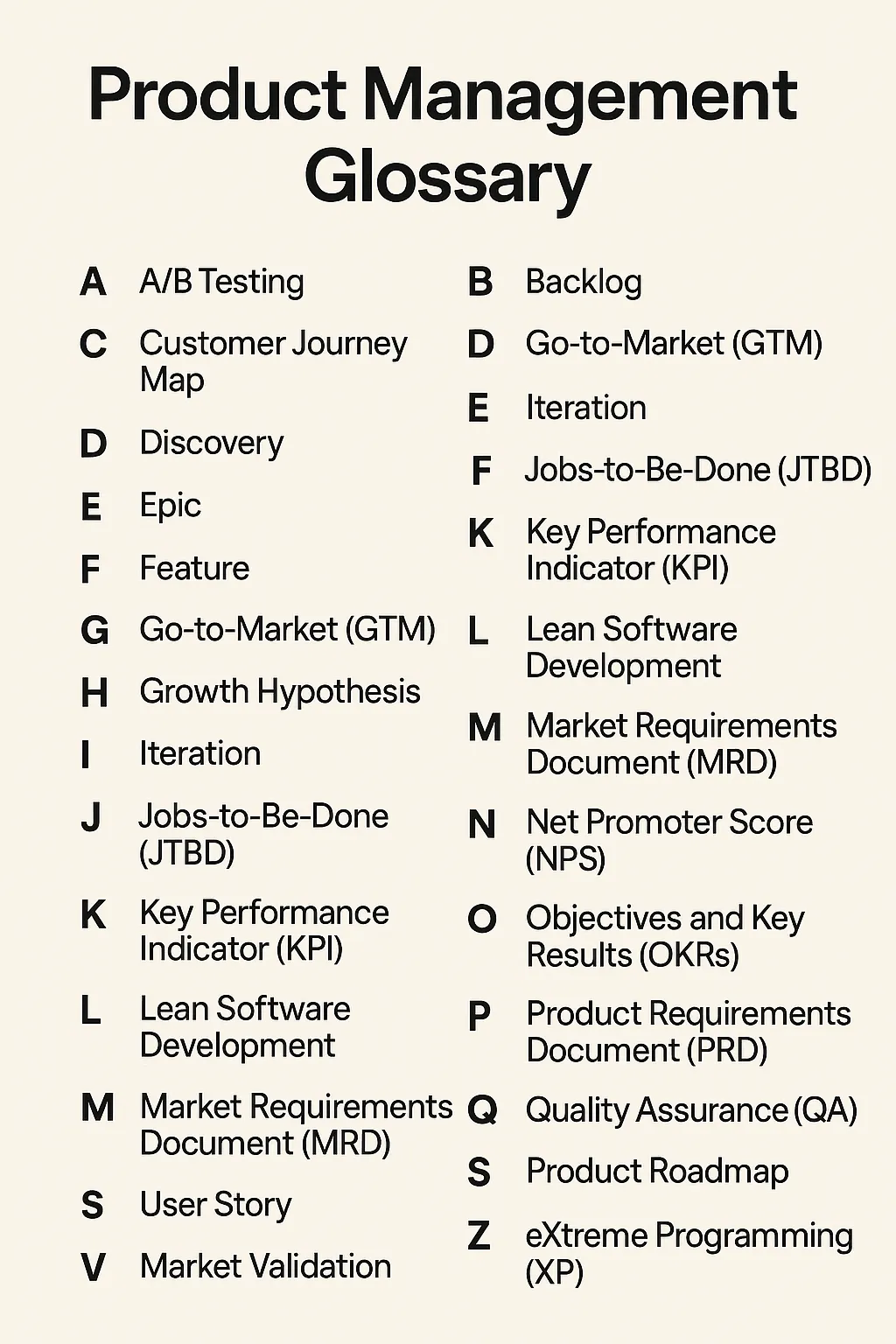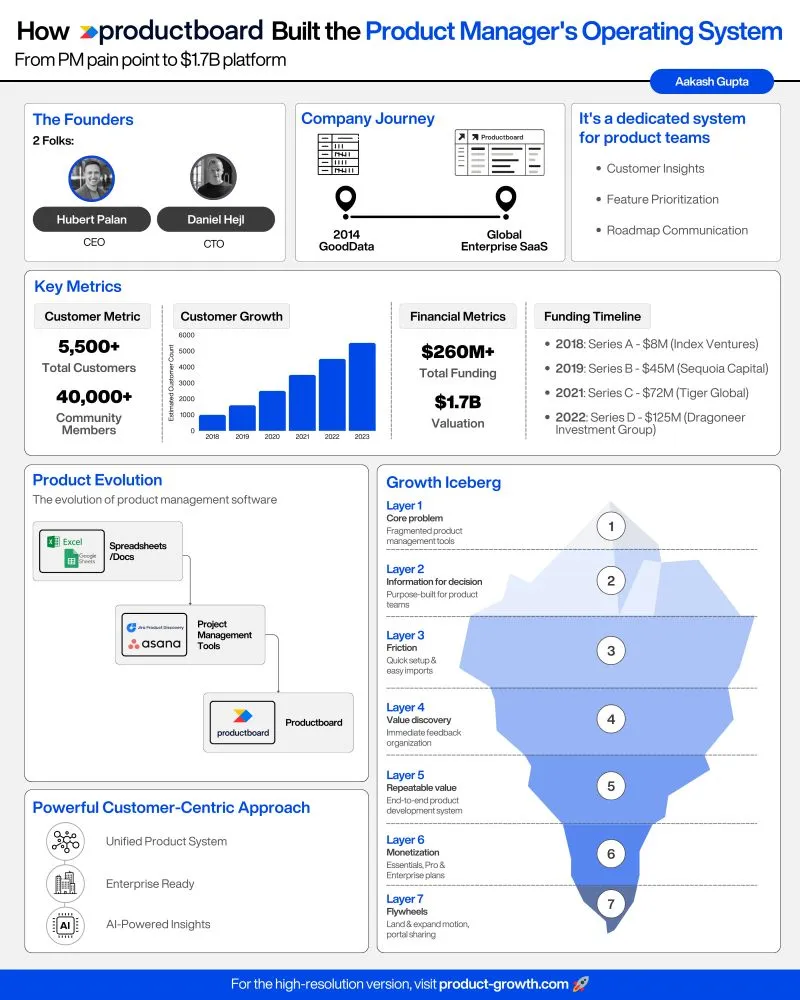
“Storytelling” the under-rated skill to crack a PM interview.
One skill that differentiates a Good PM from a Great PM is the ability to tell a great Story.
Today, what are the odds of getting selected for the job you were interviewed for?
It's 1 in 30.
For every 30 interviews you sit, one will be willing to hire you.
Is this ratio the same for all candidates?
Actually No, you can increase the chances of converting an interview by more than 50%.
You can do this with one simple skill, “Great Storytelling”.
For PMs there are two aspects of storytelling, one is the job aspect and the other is getting hired.
Product Managers (PMs) often find themselves in scenarios where they need to communicate complex ideas, persuade stakeholders, or convey the value of their products.
This is where storytelling becomes a powerful tool, transforming ordinary presentations into memorable, persuasive narratives.
I am creating a list of TOP 50 Companies that you can Apply to for PM role. List of company based on Market cap, type and Industry. Comment “Company List” along with your email to get access to the same.
Why PMs Need to Be Great Storytellers
Great PMs Tell Better Stories:
Storytelling enables PMs to connect more deeply with their audience, stakeholders, customers, or team members.
A well-told story can illustrate complex problems and solutions in a relatable and understandable way.
Storytelling is not only crucial for securing a job but also essential in the daily responsibilities of a product manager.
This is important because PM talks to different stakeholders and not all of them talk in the same tone. So story is what will help bind all of them.
Interviewers Have Low Attention Spans:
The ability to grab and maintain the interviewer’s attention is crucial during interviews.
You might already know that the attention span of a person today is less than 6 sec. So you need to constantly keep the interviewers on their toes.
Storytelling engages listeners and makes your message stand out amidst the flood of information.
Need to Be Likable to get the Job:
Stories have the power to humanize you in the eyes of the interviewer.
In the crowd of memrosised answers, and candidates using the same template answers, you need to stand out.
By sharing personal anecdotes or experiences, you make yourself more relatable and likable, crucial traits for candidates in any job interview.
This is very important because the interviewer goes through hundreds of candidates, of whom he/she needs to select one.
This is where storytelling and breaking the cycle of boring candidates using the same template can help you stand out.
Differentiating Factor:
As a Product Manager, having a unique edge is vital.
This can be tech expertise, UI/UX expertise, or even great storytelling/visionary.
Great storytelling can distinguish you from other candidates, showcasing your creativity, insight, and ability to communicate effectively.
Storytelling not only helps to communicate but also builds confidence among the stakeholders and excitement.
How to Tell a Great Story?
We have seen why storytelling is important.
But how do PMs tell a great story?
To be an expert in anything you need three things, practice, practice, and practice.
Read books, and see how the writers communicate a scene. That is how you would learn great storytelling.
But this would take time, so here is a simple structure you can use to tell a great story.
Set the Context:
Start by setting the stage for your story.
Describe the background and the environment in which your story unfolds. This helps listeners understand the starting point and the specifics of the scenario.
Like in the case of the PM interview, you have a story of how the introduction of AI in the segmentation future helped you to reduce the overall time to segment generation.
The interviewer might not be aware of these terms and contexts. What is it? Why is it? How is it? So the first step is to set context.

What Was the Challenge?:
Once the context is set then clearly outline the challenges you faced.
This component is critical as it sets up the conflict or problem that you will eventually overcome, thus capturing the listener’s interest.
The challenge should be interesting.
Imagine this as a movie plot. The Protagonist does not have money. But needs money to save the company otherwise the company will go bankrupt and he will lose the love of his life.
Similarly, your challenge needs to be interesting enough for the interviewer to ask questions like, how did you do that?
Your Journey Tackling the Challenge:
Once you have outlined the challenge, dive into the actions you took to address the challenge.
This part should demonstrate your problem-solving skills, your innovative approach, and your leadership in navigating through the issue.
This is where the interviewer needs to go Wooo.
This is where you show how you tackled a problem in your way. You connect the dots and show all the actions you did to solve this problem.
The Outcome:
Conclude with the results of your efforts.
Highlight the successes, what you learned, and how the experience has prepared you for future challenges.
This not only wraps up the story but also underlines the impact of your actions.
This will also include how happy the stakeholders were or other outcomes.
Example of PM Interview Question: How Did You Tackle the Low Adoption of Your Product Feature?
Interviewer: Can you tell me about a time you tackled a Problem with the adoption of a feature?
Candidate: Sure, let me share one of the events when one of our core features was having low adoption, and how I tackled the problem.
Interviewer: Sounds great.
Candidate: So this is one of the problems that I faced in my previous organization. I was working as a PM for the AI POD at company X.
Company X is an enterprise Saas company. And we have many of the Fortune 500 as our clients. I was working on company initiatives of integrating AI and automating parts of the product.
This is when ChatGPT was launched and suddenly the AI team's roadmap went for the toss. Everyone wanted to be the first to use AI in their products. Clients started demanding Generative AI features.
None of us also the clients were sure how the generative AI would be integrated into the product. I remembered the famous saying, “Risk comes from not knowing what you’re doing”. I remember that meme which became famous for legacy software adding an AI chatbot. I could so relate to that.

With great determination and hope, we started shipping Gen AI features. Some were built out of experience in the market space and some just as an experiment.
A couple of my AI features failed to get the standard adoption rate set by the PM. This was a great dilemma for me because many were suggesting to sunset the feature and experiment with others.
But being a stubborn PM I always felt that this feature had become a star, so I spearheaded a cross-functional review to identify the core issues.
Our user feedback indicated that the feature was not intuitive. The challenge was clear: redesign the user experience to enhance intuitiveness without overhauling the entire feature.
Then as every PM does I collaborated with UX designers to simplify the interface and to provide more info on the product I initiated a targeted user education campaign.
The outcome was a 40% increase in adoption within three months.
However, no one from the team said that they were wrong and I was right. I still felt proud of myself. And gave me a pat on the back. I was finally able to use my core skill “gut feeling”😂
Interviewer: Gut of a story 😂
Final Thoughts
The candidate does an amazing job of narrating the story. It doesn’t matter if he/she follows the structure but the importance is to make the story interesting.
The candidate also adds a little bit of humor which adds spice to the story and makes it more interesting.
Mastering the art of storytelling is not just about being a good speaker; it’s about understanding the power of narrative in shaping perceptions and influencing decisions.
For PMs, who must constantly advocate for their products and inspire their teams, storytelling is not just a skill — it’s an essential tool in their toolkit.
By honing this skill, PMs can significantly enhance their effectiveness and impact in their roles.
But always remember “with Great Power comes great responsibility.”









Comments ...
No Comments Yet ...Add One